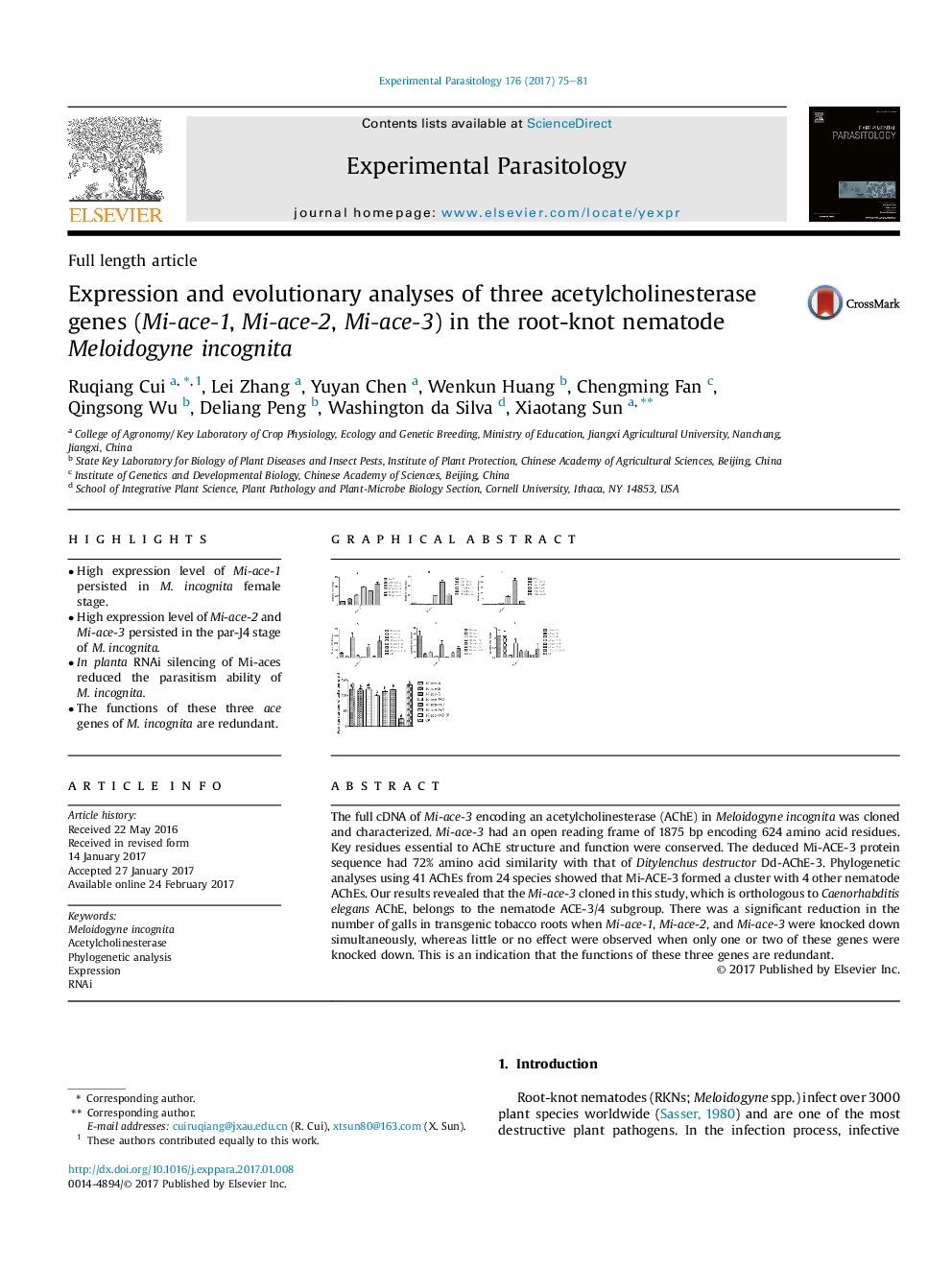| Article ID | Journal | Published Year | Pages | File Type |
|---|---|---|---|---|
| 5741129 | Experimental Parasitology | 2017 | 7 Pages |
â¢High expression level of Mi-ace-1 persisted in M. incognita female stage.â¢High expression level of Mi-ace-2 and Mi-ace-3 persisted in the par-J4 stage of M. incognita.â¢In planta RNAi silencing of Mi-aces reduced the parasitism ability of M. incognita.â¢The functions of these three ace genes of M. incognita are redundant.
The full cDNA of Mi-ace-3 encoding an acetylcholinesterase (AChE) in Meloidogyne incognita was cloned and characterized. Mi-ace-3 had an open reading frame of 1875 bp encoding 624 amino acid residues. Key residues essential to AChE structure and function were conserved. The deduced Mi-ACE-3 protein sequence had 72% amino acid similarity with that of Ditylenchus destructor Dd-AChE-3. Phylogenetic analyses using 41 AChEs from 24 species showed that Mi-ACE-3 formed a cluster with 4 other nematode AChEs. Our results revealed that the Mi-ace-3 cloned in this study, which is orthologous to Caenorhabditis elegans AChE, belongs to the nematode ACE-3/4 subgroup. There was a significant reduction in the number of galls in transgenic tobacco roots when Mi-ace-1, Mi-ace-2, and Mi-ace-3 were knocked down simultaneously, whereas little or no effect were observed when only one or two of these genes were knocked down. This is an indication that the functions of these three genes are redundant.
Graphical abstractDownload high-res image (173KB)Download full-size image
